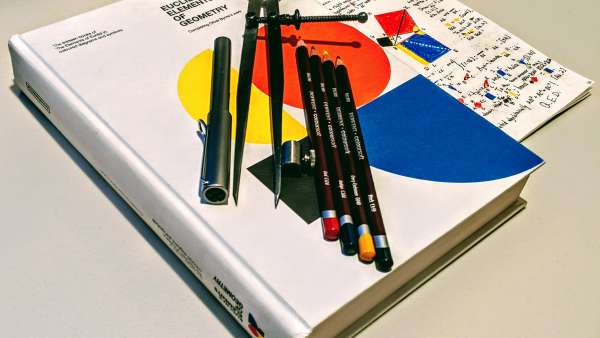Studying The Elements of Euclid reveals the foundations of mathematical rigour and the systems through the lens of which we see the world today. Though the end result of the concepts covered in many of the books of the Elements will be familiar to those who have completed high school maths; seeing Euclid’s system come together to weave the fabric of maths and understanding the proofs from first principles is another matter entirely. When I started my, what will likely be decades long, study of the great books a few months ago, Euclid was on the list. I started study of Euclid by myself, but was fortunate enough to be able to engage in a seminar based study of book 1 with Online Great Books.
Approaching rigorous, proof based mathematics from millennia past might seem like a daunting task to some. It actually could not be further from daunting; it is thrilling. When examined with wonder, discoveries abound. The study of spacial relation that is geometry is the most natural math for the human maid to apprehend, and is a unique type of gymnastics for the mind. Plato required mastery of geometry before entry the academy. It’s at the heart of the physical sciences, at the center of logic. This system remained unaltered for millennia, passing through the conflagration at Alexandria, and to this day still mostly still does.
The first step to a study of Euclid is to take a look over the proofs and draw them out on paper. Draw them by hand with nothing but a pencil, straight edge and dividers; use color! Use the previous proofs to produce the later ones, throw away your ruler and dive into the continuum without discrete measurement. The elegance is stunning; every proof is used, no thought is wasted. From a point, described as that which has no parts, Euclid’s system builds to geometries which can be used to describe the universe we inhabit, along with an entirely abstract continuum which exists only in the mind.
Euclid, like most things, is best understood with fellow travelers. While solitary study will yield understanding, the eye of the other is the best tool with which to refine our apprehension. Using the format of Socratic seminars to study Euclid allows for joint inquiry, and for me helped illuminate the substance of Euclidean geometries as the soil that allowed modernity to bloom. Once you’ve drawn out the proofs and thought about them, it is amazing to see the variety approaches and connections other folks in seminar bring to the table.
Through the dialectic of the seminar, the group, along with the individuals it is composed of, emerge with an understanding entirely other than anybody arrived with. The Socratic seminar is the key to getting a deeper understanding, broader context and better a calibration of how to approach the material. So to sum it up, pencil, paper, dividers, straightedge, fellow travelers; put all this in the format of a Socratic seminar, and you’ve got the bones of an elucidating study of The Elements.
